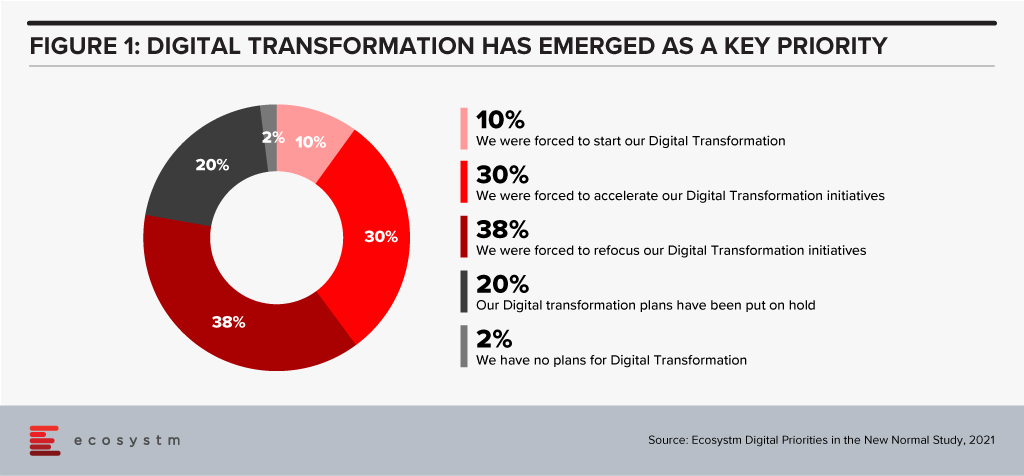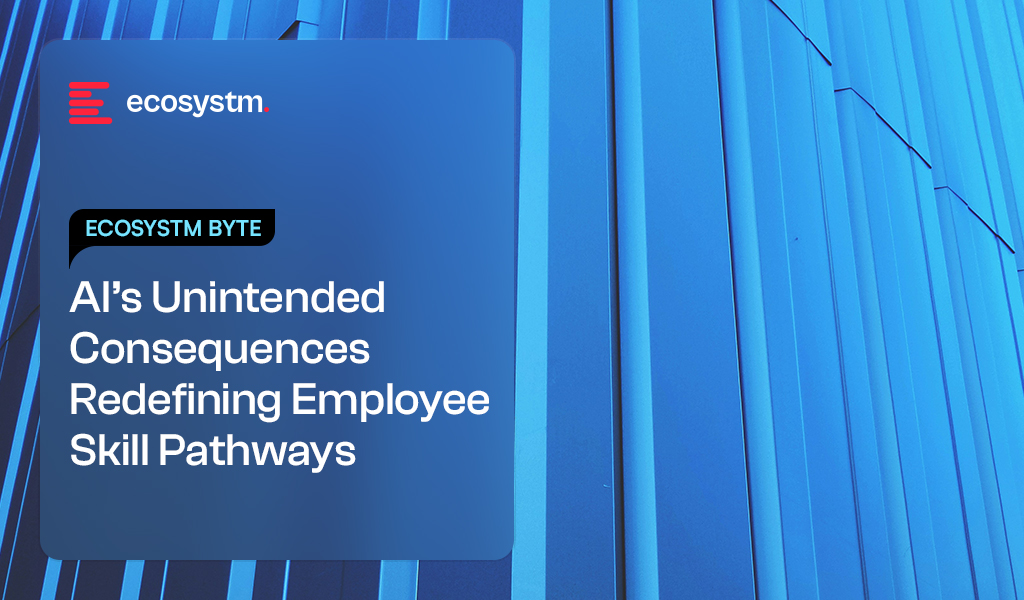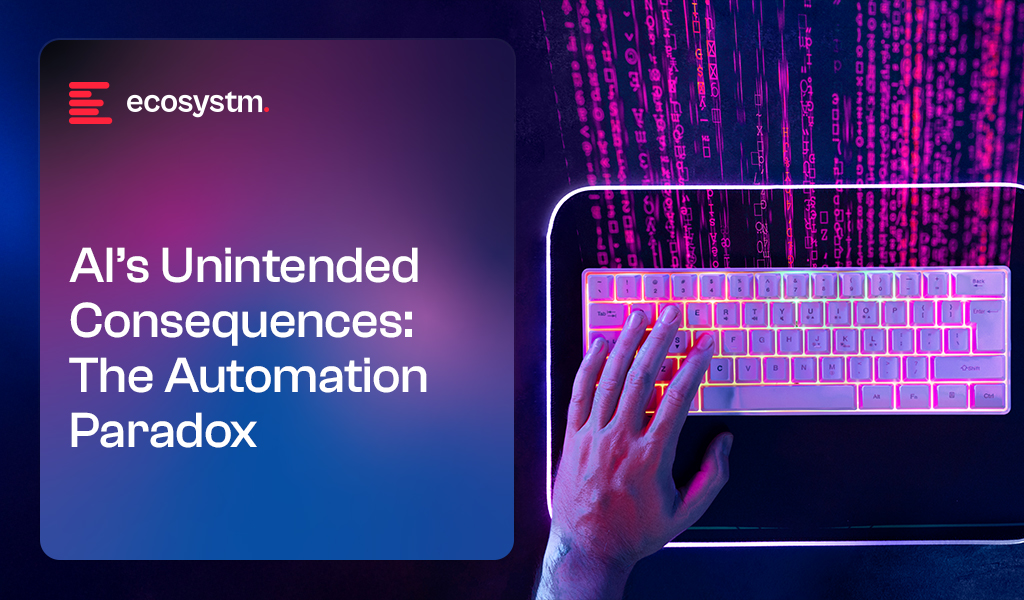The energy at ServiceNow’s Knowledge25 matched the company’s ambitious direction! ServiceNow is repositioning itself as more than just an IT service platform – aiming to be the orchestration layer for the modern enterprise. Over the past two days, I’ve seen a clear focus on platform extensibility, AI-driven automation, and a push into new functional territories like CRM and ERP.
Here are my key takeaways from Knowledge25.
Click here to download “ServiceNow Knowledge25: Big Moves, Bold Bets, and What’s Next” as a PDF.
AI Everywhere: Agents and Control Towers
ServiceNow goes all in on AI Agents – and makes it easy to adopt.
Like Google, Salesforce, and AWS, ServiceNow is betting big on agents. But with a key advantage: it’s already the enterprise layer where workflows live. Its AI Agents don’t just automate tasks; they amplify what’s already working, layer in intelligence, and collaborate with other agents across systems. ServiceNow becomes the orchestration hub, just as it already is for processes and change.
ServiceNow’s AI Control Tower is a critical accelerator for AI at scale. It enforces policies, ensures compliance with internal and regulatory standards, and provides the guardrails needed to deploy AI responsibly and confidently.
The bigger move? Removing friction. Most employees don’t know what agents can do – so they don’t ask. ServiceNow solves this with hundreds of prebuilt agents across finance, risk, IT, service, CRM, and more. No guesswork. Just plug and go.
Sitting Above Silos: ServiceNow’s Architectural Advantage
ServiceNow is finally highlighting its architectural edge.
It’s one of the few platforms that can sit above all systems of record – pulling in data as needed, delivering workflows to employees and customers, and pushing updates back into core systems. While most Asia Pacific customers use ServiceNow mainly for IT help desk and service requests, its potential extends much further. Virtually anything done in ERP, CRM, SCM, or HRM systems can be delivered through ServiceNow, often with far greater agility. Workflow changes that once took weeks or months can now happen instantly.
ServiceNow is leaning into this capability more forcefully than ever, positioning itself as the platform that can finally keep pace with constant business change.
Stepping into the Ring: ServiceNow’s CRM & ERP Ambitions
ServiceNow is expanding into CRM and ERP workflows – putting itself in competition with some of the industry’s biggest players.
ServiceNow is boldly targeting CRM as a growth area, despite Salesforce’s dominance, by addressing gaps traditional CRMs miss. Customer workflows extend far beyond sales and service, spanning fulfillment, delivery, supply chain, and compliance. A simple quoting process, for instance, often pulls data from multiple systems. ServiceNow covers the full scope, positioning itself as the platform that orchestrates end-to-end customer workflows from a fundamentally different angle.
Its Core Business Suite – an AI-powered solution that transforms core processes like HR, procurement, finance, and legal – also challenges traditional ERP providers, With AI-driven automation for tasks like case management, it simplifies workflows and streamlines operations across departments.
Closing the Skills Gap: ServiceNow University
To support its vision, ServiceNow is investing heavily in education.
The refreshed ServiceNow University aims to certify 3 million professionals by 2030. This is critical to build both demand (business leaders who ask for ServiceNow) and supply (professionals who can implement and extend the platform).
But the skills shortage is a now problem, not a 2030 problem. ServiceNow must go beyond online learning and push harder on in-person classes, tutorials, and train-the-trainer programs across Asia Pacific. Major cloud providers like AWS broke through when large enterprises started training their entire workforces – not just on usage, but on development. ServiceNow needs similar scale and commitment to hit the mainstream.
Asia Pacific: ServiceNow’s Next Growth Frontier
ServiceNow’s potential is massive – and its opportunities even bigger.
In Asia Pacific, many implementations are partner-led, but most partners are currently focused on the platform’s legacy IT capabilities. To unlock growth, ServiceNow needs to empower its partners to engage beyond IT and connect with business leaders.
Despite broader challenges like shrinking tech budgets, fragmented decision-making, and decentralised tech ownership, ServiceNow has a clear path forward. By upskilling partners, simplifying its narrative, and adapting quickly, it’s well-positioned to continue its growth and surpass the hurdles many other software vendors face.

In my previous Ecosystm Insight, I explored the Automation Paradox – how AI shifts human roles from routine tasks to more complex, high-pressure responsibilities. Now, let’s look at its impact on entry-level roles and what it means for those starting their careers.
AI is reshaping the skills mix in enterprises, automating many repetitive, lower-complexity tasks that traditionally serve as stepping stones for new professionals. Roles like Level 1 IT support or paralegal work – once common entry points – are increasingly being automated or significantly reduced.
The question now is: how will the next generation gain the experience needed to advance?
Click here to download “AI’s Unintended Consequences: Redefining Employee Skill Pathways” as a PDF
Why Are Entry-Level Roles Changing?
- Automation of Routine Tasks. AI-driven tools are taking over routine tasks. AI-driven tools and chatbots now handle common helpdesk issues instantly, eliminating the need for human intervention. Contract review software scans and analyses legal documents, cutting the workload of junior paralegals.
- Demand for Specialised Knowledge. As AI handles grunt work, remaining roles demand higher-level skills – technical, analytical, and interpersonal. For e.g., IT support shifts from password resets to configuring complex systems, interpreting AI diagnostics, and crafting custom solutions.
With routine tasks automated and remaining work more complex, traditional career entry points may shrink – or vanish entirely.
If an organisation no longer has a roster of junior positions, where will young professionals gain the foundational experience and institutional knowledge needed to excel?
The Ripple Effect on Talent & Development
Reduced Traditional Apprenticeships. Entry-level roles have historically provided new hires with an informal apprenticeship – learning basic skills, building relationships, and understanding organisational nuances. Without these roles, new talent may miss out on crucial developmental opportunities.
Potential Skills Gap. By removing the “lower rungs” of the career ladder, we risk ending up with professionals who lack broad foundational knowledge. A fully automated helpdesk, for example, might produce mid-level analysts who understand theory but have never troubleshot a live system under pressure.
Pressure to Upskill Quickly. New recruits may have to jump directly into more complex responsibilities. While this can accelerate learning, it may also create undue stress if the proper structures for training, mentoring, and support are not in place.
Strategies to Create New Skill Pathways
1. Reimagined Entry Pathways for New Employees
- Rotational Programs. One way to fill the void left by disappearing junior roles is through rotational programs. Over the course of a year, new hires cycle through different departments or projects, picking up hands-on experience even if traditional entry-level tasks are automated.
- Apprenticeship-Style Training. Instead of “on-the-job” experience tied to low-level tasks, companies can establish apprenticeship models where junior employees shadow experienced mentors on live projects. This allows them to observe complex work up close and gradually take on real responsibilities.
2. Blended Learning & Simulation
- AI-Driven Training. Ironically, AI can help solve the gap it creates. AI simulations and virtual labs can approximate real-world scenarios, giving novices a taste of troubleshooting or document review tasks.
- Certification & Micro-Credentials. More specialised skill sets may be delivered through structured learning, using platforms that provide bite-sized, verifiable credentials in areas like cybersecurity, analytics, or advanced software configuration.
- Knowledge Sharing Communities. Team chat channels, internal wikis, and regular “lunch and learn” sessions can help new employees gain the cultural and historical context they’d otherwise accumulate in junior roles.
3. Redefining Career Progression
- Competency-Based Pathways. Instead of relying on job titles (e.g. Level 1 Support), organisations can define career progression through skill mastery. Employees progress once they demonstrate competencies – through projects, assessments, or peer review – rather than simply ticking time-based boxes.
- Continuous Upskilling. Given the rapid evolution of AI, companies should encourage a culture of lifelong learning. Subsidised courses, conference attendance, and online platforms help maintain an agile, future-ready workforce.

Automation and AI hold immense promise for accelerating productivity, reducing errors, and streamlining tasks across virtually every industry. From manufacturing plants that operate robotic arms to software-driven solutions that analyse millions of data points in seconds, these technological advancements are revolutionising how we work. However, AI has already led to, and will continue to bring about, many unintended consequences.
One that has been discussed for nearly a decade but is starting to impact employees and brand experiences is the “automation paradox”. As AI and automation take on more routine tasks, employees find themselves tackling the complex exceptions and making high-stakes decisions.
What is the Automation Paradox?
1. The Shifting Burden from Low to High Value Tasks
When AI systems handle mundane or repetitive tasks, ‘human’ employees can direct their efforts toward higher-value activities. At first glance, this shift seems purely beneficial. AI helps filter out extraneous work, enabling humans to focus on the tasks that require creativity, empathy, or nuanced judgment. However, by design, these remaining tasks often carry greater responsibility. For instance, in a retail environment with automated checkout systems, a human staff member is more likely to deal with complex refund disputes or tense customer interactions. Or in a warehouse, as many processes are automated by AI and robots, humans are left with the oversight of, and responsibility for entire processes. Over time, handling primarily high-pressure situations can become mentally exhausting, contributing to job stress and potential burnout.
2. Increased Reliance on Human Judgment in Edge Cases
AI excels at pattern recognition and data processing at scale, but unusual or unprecedented scenarios can stump even the best-trained models. The human workforce is left to solve these complex, context-dependent challenges. Take self-driving cars as an example. While most day-to-day driving can be safely automated, human oversight is essential for unpredictable events – like sudden weather changes or unexpected road hazards.
Human intervention can be a critical, life-or-death matter, amplifying the pressure and stakes for those still in the loop.
3. The Fallibility Factor of AI
Ironically, as AI becomes more capable, humans may trust it too much. When systems make mistakes, it is the human operator who must detect and rectify them. But the further removed people are from the routine checks and balances – since “the system” seems to handle things so competently – the greater the chance that an error goes unnoticed until it has grown into a major problem. For instance, in the aviation industry, pilots who rely heavily on autopilot systems must remain vigilant for rare but critical emergency scenarios, which can be more taxing due to limited practice in handling manual controls.
Add to These the Known Challenges of AI!
Bias in Data and Algorithms. AI systems learn from historical data, which can carry societal and organisational biases. If left unchecked, these algorithms can perpetuate or even amplify unfairness. For instance, an AI-driven hiring platform trained on past decisions might favour candidates from certain backgrounds, unintentionally excluding qualified applicants from underrepresented groups.
Privacy and Data Security Concerns. The power of AI often comes from massive data collection, whether for predicting consumer trends or personalising user experiences. This accumulation of personal and sensitive information raises complex legal and ethical questions. Leaks, hacks, or improper data sharing can cause reputational damage and legal repercussions.
Skills Gap and Workforce Displacement. While AI can eliminate the need for certain manual tasks, it creates a demand for specialised skills, such as data science, machine learning operations, and AI ethics oversight. If an organisation fails to provide employees with retraining opportunities, it risks exacerbating skill gaps and losing valuable institutional knowledge.
Ethical and Social Implications. AI-driven decision-making can have profound impacts on communities. For example, a predictive policing system might inadvertently target specific neighbourhoods based on historical arrest data. When these systems lack transparency or accountability, public trust erodes, and social unrest can follow.
How Can We Mitigate the Known and Unknown Consequences of AI?
While some of the unintended consequences of AI and automation won’t be known until systems are deployed and processes are in practice, there are some basic hygiene approaches that technology leaders and their organisational peers can take to minimise these impacts.
- Human-Centric Design. Incorporate user feedback into AI system development. Tools should be designed to complement human skills, not overshadow them.
- Comprehensive Training. Provide ongoing education for employees expected to handle advanced AI or edge-case scenarios, ensuring they remain engaged and confident when high-stakes decisions arise.
- Robust Governance. Develop clear policies and frameworks that address bias, privacy, and security. Assign accountability to leaders who understand both technology and organisational ethics.
- Transparent Communication. Maintain clear channels of communication regarding what AI can and cannot do. Openness fosters trust, both internally and externally.
- Increase your organisational AIQ (AI Quotient). Most employees are not fully aware of the potential of AI and its opportunity to improve – or change – their roles. Conduct regular upskilling and knowledge sharing activities to improve the AIQ of your employees so they start to understand how people, plus data and technology, will drive their organisation forward.
Let me know your thoughts on the Automation Paradox, and stay tuned for my next blog on redefining employee skill pathways to tackle its challenges.

In the rush towards digital transformation, individual lines of business in organisations, have built up collections of unconnected systems, each generating a diversity of data. While these systems are suitable for rapidly launching services and are aimed at solving individual challenges, digital enterprises will need to take a platform approach to unlock the full value of the data they generate.
Data-driven enterprises can increase revenue and shift to higher margin offerings through personalisation tools, such as recommendation engines and dynamic pricing. Cost cutting can be achieved with predictive maintenance that relies on streaming sensor data integrated with external data sources. Increasingly, advanced organisations will monetise their integrated data by providing insights as a service.
Digital enterprises face new challenges – growing complexity, data explosion, and skills gap.
Here are 5 ways in which IT teams can mitigate these challenges.
- Data & AI projects must focus on data access. When the organisation can unify data and transmit it securely wherever it needs to, it will be ready to begin developing applications that utilise machine learning, deep learning, and AI.
- Transformation requires a hybrid cloud platform. Hybrid cloud provides the ability to place each workload in an environment that makes the most sense for the business, while still reaping the benefits of a unified platform.
- Application modernisation unlocks future value. The importance of delivering better experiences to internal and external stakeholders has not gone down; new experiences need modern applications.
- Data management needs to be unified and automated. Digital transformation initiatives result in ever-expanding technology estates and growing volumes of data that cannot be managed with manual processes.
- Cyber strategy should be Zero Trust – backed by the right technologies. Organisations have to build Digital Trust with privacy, protection, and compliance at the core. The Zero Trust strategy should be backed by automated identity governance, robust access and management policies, and least privilege.
Read below to find out more.
Download The Future of Business: 5 Ways IT Teams Can Help Unlock the Value of Data as a PDF

In recent years, businesses have faced significant disruptions. Organisations are challenged on multiple fronts – such as the continuing supply chain disruptions; an ongoing energy crisis that has led to a strong focus on sustainability; economic uncertainty; skills shortage; and increased competition from digitally native businesses. The challenge today is to build intelligent, data-driven, and agile businesses that can respond to the many changes that lie ahead.
Leading organisations are evaluating ways to empower the entire business with data, machine learning, automation, and AI to build agile, innovative, and customer-focused businesses.
Here are 7 steps that will help you deliver business value with data and AI:
- Understand the problems that need solutions. Before an organisation sets out on its data, automation, and AI journey, it is important to evaluate what it wants to achieve. This requires an engagement with the Tech/Data Teams to discuss the challenges it is trying to resolve.
- Map out a data strategy framework. Perhaps the most important part of this strategy are the data governance principles – or a new automated governance to enforce policies and rules automatically and consistently across data on any cloud.
- Industrialise data management & AI technologies. The cumulation of many smart, data-driven initiatives will ultimately see the need for a unified enterprise approach to data management, AI, and automation.
- Recognise the skills gap – and start closing it today. There is a real skills gap when it comes to the ability to identify and solve data-centric issues. Many businesses today turn to technology and business consultants and system integrators to help them solve the skills challenge.
- Re-start the data journey with a pilot. Real-world pilots help generate data and insights to build a business case to scale capabilities.
- Automate the outcomes. Modern applications have made it easier to automate actions based on insights. APIs let systems integrate with each other, share data, and trigger processes; and RPA helps businesses automate across applications and platforms.
- Learn and improve. Intelligent automation tools and adaptive AI/machine learning solutions exist today. What organisations need to do is to apply the learnings for continuous improvements.
Find more insights below.
Download The Future of Business: 7 Steps to Delivering Business Value with Data & AI as a PDF

As the world has had to cope with a scenario never seen before in modern times, technology has been at the forefront of the response. This means hardware – computers, servers and the like – flew off the shelves. Cloud infrastructure and migration have been top of mind. “Digital Transformation” and the adoption of digital tools is expanding like a house on fire! We found that over 3 in 4 companies accelerated their digital plans in some way. Another 20% put plans on hold, largely because they felt the need to evaluate the old plans which became inadequate.

As vendors, channel partners and organisations scramble to put their new digital houses together and build the best digital castles possible, there is a major talent crunch. There are few who can deeply understand customer needs and recommend the right solution. While this affects all parties, the channel partners are feeling this more acutely. In my recent conversations with channel partners, it became evident that they are facing difficulties in finding and retaining good Sales and Solutions talent. There have also been complaints about talent being poached by the tech vendors they partner with!
The standard response to this problem is vendor certification and training. However, this is inadequate, due to three main reasons.
The Pace of Technological Change
The latest technology and what is possible with it changes on almost a daily basis. In this environment, for a person to keep up with everything is almost impossible. The ways in which a specific technology can be applied and the solutions it can deliver change, based on the ecosystem that forms around the technology and with the improvements in capability with time.
Small changes in different applications can cascade to create a solution (in terms of meeting a user need) which was not possible a short time ago. This may then compete with a completely different technology that has been considered satisfactory till date for the same user need. If the new option performs better, the old option is gone before you can snap your fingers.
For a salesperson to be across all this requires a solid understanding of the industry and its environment at a conceptual level. Given the pace of change, such people have become increasingly rare. They can be trained on a specific technology, not on perspectives, conceptual clarity or industry depth – that would require a formal degree!
The Limits of Lecture Style Training

Unfortunately, there is a key shortcoming in the whole certification program. A person going through any kind of classroom type training is limited in how much they can understand. This includes any kind of knowledge download or dump – videos, online courses, virtual classrooms, reading, webinars or physical classes. With technology that changes every day, the depth of knowledge imparted through such knowledge downloads is woefully inadequate. Expertise in technology is difficult to attain without getting one’s hands dirty.
Trying to make the training more “practical”, involving more exercises is good and does lead to better-trained personnel. But this is a long process and does not fit in with the timelines of most certification programs.
An actual customer implementation is probably the best teacher available right now. However, this leads to an unintended consequence – channel partners tend to stick with the vendor solutions that they have implemented before. Even if they can partner with other tech providers for better options they prefer to stick to what they know.
Vendor Bias in Training Programs
Certification is done, quite understandably, from the vendor’s point of view. The program is not built to generate an understanding of the tech world that we live in. That is taken as a given. Expertise in the vendor’s solution is the focus, and rightfully so. Talking points refer to that solution’s strengths and gloss over the weaknesses. There is no reason for a vendor to teach the participant the advantages of the competitor’s technology. Or explain the shortcomings of their own.
When the certified salesperson, however, is in front of the customer, this certification does not help them address all the queries. They are unable to clear the doubts or provide a complete (and objective) view that would satisfy a probing customer.
But there are ways in which this skills gap can be bridged – it will require both vendors and their channel partners to change how they view and grow talent. Stay tuned for the next feature where I share how the tech talent landscape can be changed.

As the economy looks to recover from the devastating impact of COVID-19 in 2020, businesses in Singapore are gaining momentum through technology leverage, and wider adoption of digital platforms. The disruption has led to a higher dependence on and appetite for technology to rebuild industries such as Healthcare, Financial Services and Manufacturing. Organisations are re-engineering their processes to go digital and this has driven the need to re-skill and upskill.
Growing Need for Tech Talent
Even before the pandemic, there was a shift of business focus on the Asian and Southeast Asian economies, that has led global companies and investors to flock to Singapore as a regional hub. Many of these companies are technology providers and as Singapore looks well-positioned to recover from the pandemic, these companies find themselves delivering on multiple transformation projects across industries. This has led to an increased demand for tech experts, The growing demand, combined with travel restrictions and a focus on ensuring Singaporeans are a priority for employment opportunities, has made the tech community anxious about the talent availability and the possibility of a talent crunch.
Ecosystm Principal Advisor Ravi Bhogaraju says, “Tech talent crunch is very palpable in the Singapore market today. The primary drivers of the crunch have been the change in the immigration policies due to the COVID-19 disruption followed by the huge increase in the demand for technology skills in the last 12-18 months. This gap will continue to rise over the next years as more technology firms expand or set up their base in Singapore.”
Skill Development Efforts and Programs
With this in mind, the Government of Singapore is focused on addressing this concern through various innovation and skills development programs. For instance, the Economic Development Board (EDB) has introduced programs to grow the talent pool, partnered with institutions and organisations for reskilling programs and supporting skills development with help of other companies.
Some more Government-supported initiatives to bridge the skills shortage include Singapore’s Global Ready Talent Programme (GRT) which aims to build talent pipeline by exposing Singaporeans to internships and work opportunities overseas, TechSkills Accelerator (TeSA) and Professional Conversion Programmes (PCP), to provide training on knowledge and skills to support expansion plans.
The Government has also increased its spending on digital initiatives to help SMEs and empower them to hire more specialised manpower in focus areas such as AI, cloud, IoT, and data analytics.
Singapore’s Tech.Pass visa program is another initiative to invite qualified individuals to work and operate in Singapore. It supports the entry of up to 500 proven founders, leaders and experts from top tech companies into Singapore.
Bhogaraju says, “The skills gap needs to be bridged with talent that is ready to step up and take on the new roles. To that end we see that the Singapore Government is making the right investments in the Skills Future program. There are a few pillars currently in play that are addressing different elements of the talent skilling initiatives. The key pillars are talent reskilling, experiential training, work-learn programs, and implementing new education curriculum. These are well designed in line with the skills frameworks and are meant to address the skills development for mid-career professionals to students in polytechnics and university programs.”
Tech Companies Need a Long-term View
However, Bhogaraju notes, “That’s only one side of the equation – the other element of the partnership is the companies that need these skills and how they are thinking of approaching the skills they need. Here there are some good examples of public private partnerships to help bridge the skills. However, in many cases the companies are still struggling to fill the positions – and that is because they use an age-old strategy of ‘let’s attract the talent’ to come work for us. In a time when there is limited talent in the pool – this strategy will only result in spinning wheels and expending energy.”
“Companies need to fundamentally rethink their talent pooling and development strategies to be able to deliver good quality talent. They need to develop a strategy that focuses on reskilling, finding new talent pools, leveraging the gig economy and developing their existing talents into adjoining pools to be able to fill these gaps effectively.”
As the nature of work transforms, many professionals will be challenged to learn new skills to address the skills gaps. Create your free account on Ecosystm Platform to access research, data and insights on the emerging technologies, the supply of skills and the demand for tech talent to address the mismatch.













































